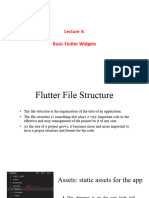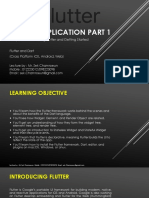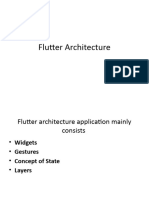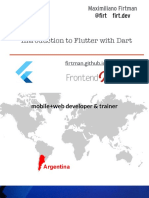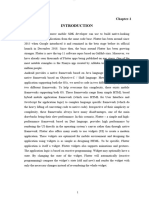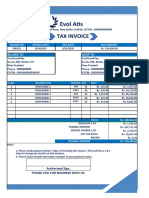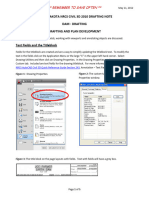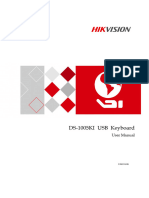0% found this document useful (0 votes)
12 views22 pagesIntro To Flutter
Flutter is a Google mobile SDK/UI framework that enables developers to create native applications for both Android and iOS using a single codebase. It is open-source, free, and utilizes the Dart programming language, providing high productivity, exceptional quality, and improved performance. The framework consists of key components like the Flutter engine, foundation library, and design-specific widgets, with a focus on both stateless and stateful widgets for building user interfaces.
Uploaded by
sultanimay599Copyright
© © All Rights Reserved
We take content rights seriously. If you suspect this is your content, claim it here.
Available Formats
Download as PPTX, PDF, TXT or read online on Scribd
0% found this document useful (0 votes)
12 views22 pagesIntro To Flutter
Flutter is a Google mobile SDK/UI framework that enables developers to create native applications for both Android and iOS using a single codebase. It is open-source, free, and utilizes the Dart programming language, providing high productivity, exceptional quality, and improved performance. The framework consists of key components like the Flutter engine, foundation library, and design-specific widgets, with a focus on both stateless and stateful widgets for building user interfaces.
Uploaded by
sultanimay599Copyright
© © All Rights Reserved
We take content rights seriously. If you suspect this is your content, claim it here.
Available Formats
Download as PPTX, PDF, TXT or read online on Scribd
/ 22





